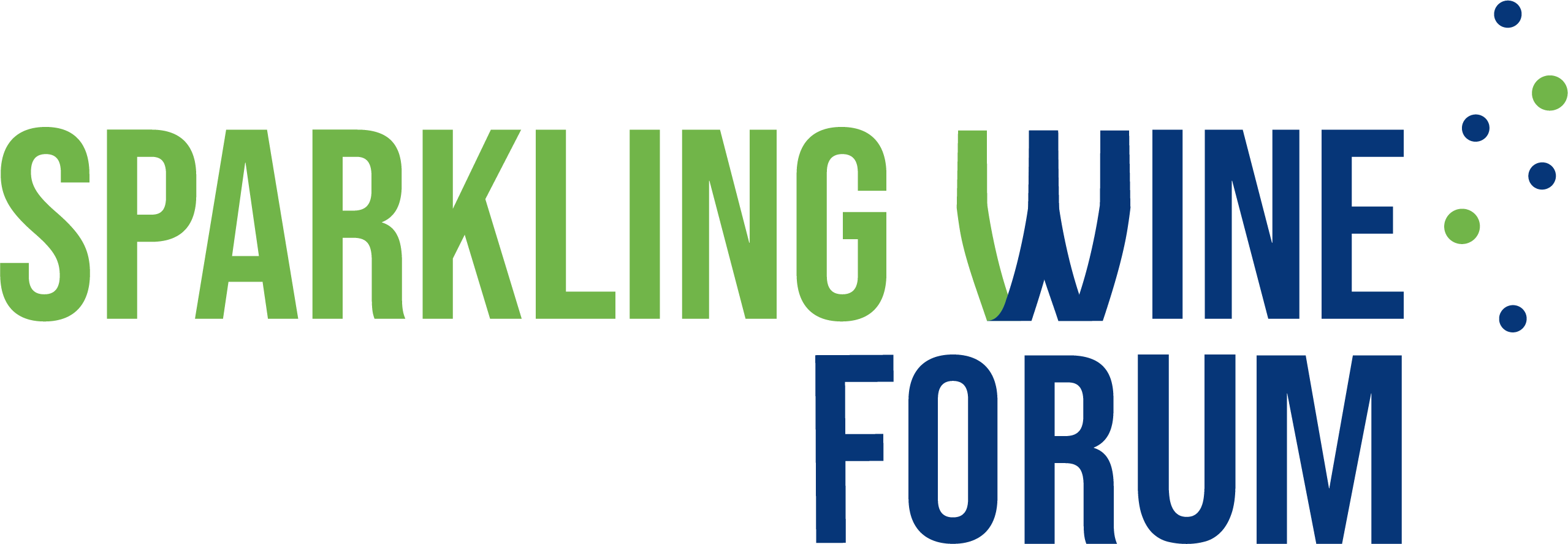A dense day between innovations and reflections for this first edition around the question of global warming for sparkling wines.
Champagne, Crémant, Prosecco, etc. Effervescents are on the rise, but don’t forget global warming. Organized by Effevent and Vinidea in an almost full room of the Village by CA Reims, many speakers followed one another during the first Sparkling Wine Forum to share innovations and meet the needs of the sector in the face of global warming.
Champagne not spared
«Between 1985 and 2007, we saw an increase in yield related to the weight of the bunches which went from 100g to 140g, an increase of 0.8% of the TAV and a decrease of the total acidity of 1.5 g/ L» explains Wilfrid Devaugermé, president of the Union of Oenologists of Champagne. «In 30 years, the average harvest date has been advanced by 20 days». If it is easier now to pick up at maturity than 30 years ago, the situation could soon accelerate with problems of stirring and colloidal instability already noted on the ground. And some winemakers are already changing their practice.
Adapt to gain in quality
This is the case of Cédric Moussé. In 2018, despite a magnificent harvest, his grapes returned warm and the winemaker was not satisfied. After calculations, he estimates losing «at least 120L for pinot meunier and 20L on pinot noir» between picking and change because of grape transfers. This is the trigger.
«It is the press that waits for the grape and no more the opposite»
“Now, we pick directly from small boxes of 15 to 17kg of reason that we place on pallets and then directly in a cold room at 8°C, just the time to finish the plot. It is the press that waits for the grapes and not the other way around,” explains the winemaker of Champagne Moussé who has planned everything to increase the quality of the final product, year hot as year cold. Fast loading of the press, but refrigerated and recovery of fermentation CO2 also contributed to the drastic decrease in SO2 quantities.
Tools to manage acidity and pH
Whether cultural, chemical or physical, this day presented many keys to manage acidity.
«In addition to a fungicide saving of 80 to 90%, voltis is characterized by greater acidity and greater astringency» explains Pascal Poupault, engineer at the French Institute of Vine and Wine, about this resistant variety whose oenological potential has been studied in the context of the effervescents of the Loire Valley.
«Voltis wins a good score against a Saumur, a Vouvray, or a Crémant de Loire»
“It also brings freshness and complexity and earns a good overall note against a Saumur, a Vouvray, or a Crémant de Loire. On the other hand, the results are more mixed in assembly, with a greater impact from a sensory point of view,” he notes. Exchanges that are all the more interesting when we know that the first experimental plantations in Champagne took place a little more than a month ago…
Another lever: that of microorganisms. «Lachancea thermotolerans, in addition to Saccharomyces, will allow to degrade sugars to lactic acid and lower the TAV to a lesser extent» explains Joana Coulon, R&D and microbiology manager at BioLaffort. If Saccharomyces cerevisiae are able to modulate the production of malic acid, the majority of commercial strains consume about 20% on average and are called demalicants.
«By combining yeasts, we can really play on the acidity of the wines»
BioLaffort was also interested in the «removing» character of yeasts to select a highly malicious one. “The Klima yeast will produce malic acid and preserve acidity. It also lowered TAV by 0.3% vol.” explains Joanna Coulon. “Thus, by combining thermotolerant Lachancea and mischievous Saccharomyces cerevisiae, we can really play on the acidity of wines, or even go further by associating Oenococcus oeni bacteria which degrades citric acid very little, thus preserving total acidity,” concludes Joanna Coulon, cautioning about the timing of microorganism inoculation and temperature.
To lower the pH, Fernando Zamora, researcher at the University of Tarragona, presented the results of a research group on cationic exchange, which allows a decrease in pH by the capture of K+ ions and the release of H+ ions. “We treated a macabeu must with an initial pH of 3.21 to obtain a must at 1.90. The processed must was then blended at different proportions of the control must before being vinified in the traditional method.”
«The preferred wine is the one with 15% of must treated»
Results: no significant difference in polysaccharides and proteins (very important for the height and persistence of the foam), nor in sensory analysis since only acidity was affected.
Another point: the preferred wine is the one with 15% of must treated. Note however that this method is not allowed in organic.
A starter in one step
«The idea was also to reduce the occupancy of the winery and energy savings» explains Nathan Wisniewski, Head of Fermentis Wine France. “SPK05 yeast was selected for its resistance to difficult foaming conditions (high TAP, nitrogen deficiencies and low pH) and allowed us to simplify the protocol by reducing the acclimatization phase. Thus, it lasts only 36h instead of 3 to 5 days, without nitrogen deficiency, while reaching our goal of 60 to 80 million viable cells/ mL. After sixty days, you get a sufficient pressure of 6 bars.”
The day also raised issues of sustainability and ethics in the face of consumer demands for consistency and transparency. These reflections should continue next year in another European country since the Sparkling Wine Forum aims to travel between the main producers of sparkling wines
Written by Amélie Bimont – June 23, 2023
Original article: https://www.vitisphere.com/actualite-99679-effervescence-au-sparkling-wine-forum-.html


